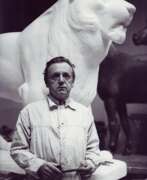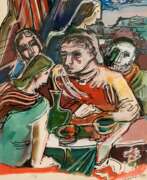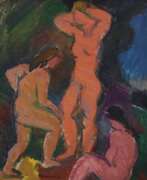Post War Art Berlin Secession


Willi Robert Huth was a German expressionist painter. He studied at the School of Arts and Crafts in Erfurt and Düsseldorf. During the First World War, he served as a soldier. In 1919 he began independent activities in Berlin as an artist. In the same year he joined the expressionist group Jung Erfurt.
With the onset of the Nazi regime, Huth was suppressed as an artist. Later he was even banned from holding exhibitions. Three of his works were confiscated during the "degenerate art movement." In 1944 his studio in Berlin was bombed and all his works were destroyed.
After the war Willy Robert Huth became a drawing teacher and then professor at the Academy of Applied Arts in Berlin.
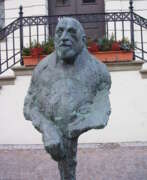

Hans Marsilius Purrmann was a German artist.
He completed an apprenticeship as a scene painter and interior decorator, and subsequently studied in Karlsruhe and Munich before going to Paris in 1906. It was here he became a student and later a friend of Henri Matisse whom he set up a painting school with.


Richard Scheibe was a German artist primarily remembered as a sculptor. He trained as a painter, and taught himself to sculpt beginning in 1906. From 1925-1933 he taught at the Städelsches Kunstinstitut in Frankfurt am Main. He was dismissed from teaching when the Nazis seized power but was reinstated in 1934. He received various recognitions during the Third Reich, including the Goethe-Medaille für Kunst und Wissenschaft and placement on the Gottbegnadeten list. After World War II he continued to sculpt, including a figurative piece for the Memorial to the German Resistance. His work was also part of the sculpture event in the art competition at the 1928 Summer Olympics.
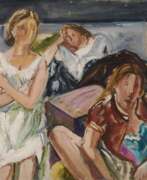

Conrad Westpfahl was a German painter. He was associated with the Expressionist movement in Germany, and his paintings often depicted the landscapes and people of rural Bavaria.
Westpfahl studied at the Academy of Fine Arts in Berlin and later became a professor at the School of Arts and Crafts in Würzburg. He was a member of the Berlin Secession, an association of artists who broke away from the traditional academic art world in the early 20th century.
Westpfahl's style was characterized by bold colors, thick brushstrokes, and a sense of emotional intensity. Later he moved on to more abstract painting.
Today, Westpfahl's paintings are held in collections around the world, including the National Gallery in Berlin and the Museum of Modern Art in New York.
